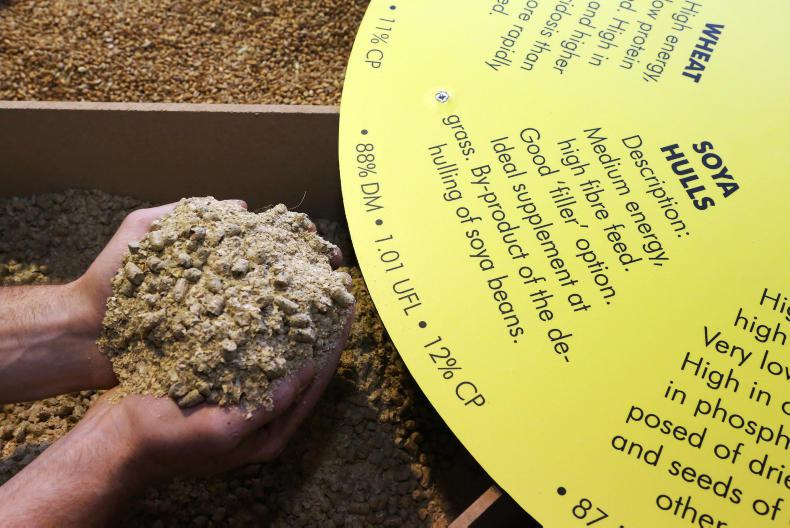Soya hulls is one of the most common non-cereal feed ingredients in beef cattle diets. It is a high-fibre ingredient and thus acts to reduce the risk of acidic stomach upsets.
However, as this fibre is highly digestible, there is only a slight effect on ration energy density when it replaces cereal.
But is there a limit above which performance is hit? Recent research conducted at Teagasc Grange evaluated optimum inclusion rates for the ingredient.
A comprehensive study evaluating soya hulls offered either as supplements to grass silage (3.5kg fresh weight) for growing cattle or ad-libitum to finishing cattle was carried out in 2014. The standard ration consisted of 86% rolled barley and 6% soya bean meal. To evaluate soya hulls in beef diets, 20%, 40%, 60% and 80% of the standard ration was replaced. Charolais steers were used. Grass silage was of moderate quality (64% DMD, 14% CP). Animals were initially offered silage to appetite plus 3.5kg of their concentrate for 70 days, before adapting to ad-libitum concentrates for finishing (86 days).
This experiment suggests that at moderate- or high-concentrate feeding levels (>3.5kg) the maximum inclusion rate for soya hulls in a beef ration is 20%.






 This is a subscriber-only article
This is a subscriber-only article










SHARING OPTIONS: